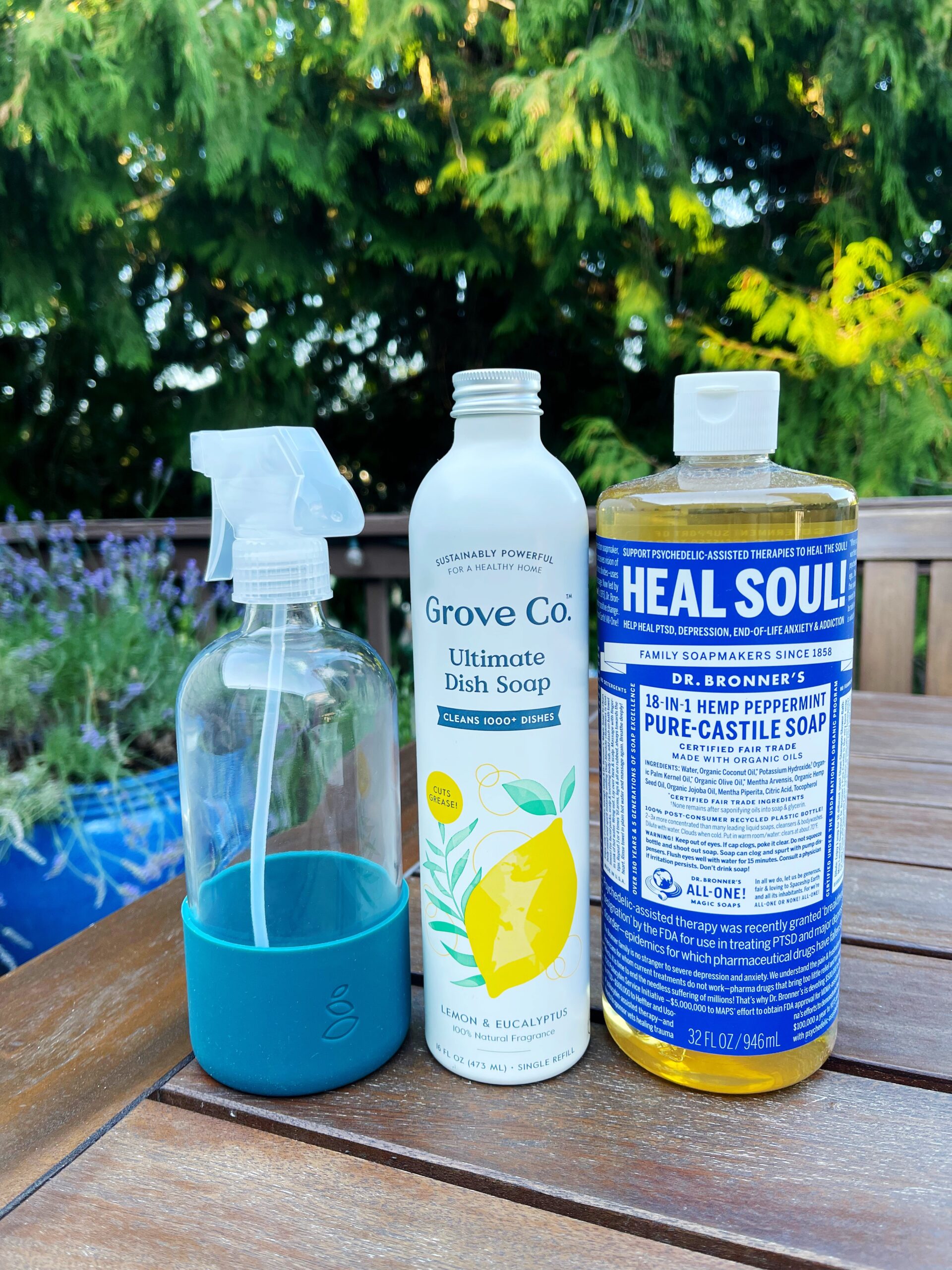I recently shared on my Instagram account some of my favorite tips for going plastic free. I wanted to compile them in one post so that it’s easier to search for them on the blog. I also archived my favorite tips from Plastic Free July in my Instagram stories to make it easier to find – check it out!
Disclosure: Some of the links in this post are affiliate links, meaning, at no additional cost to you, I will earn a commission if you click through and make a purchase.
Here are my favorite tips for going plastic free. But first, a quote.
We don’t need a handful of people doing zero waste perfectly. We need millions of people doing it imperfectly.
Anne Marie Bonneau, zerowastechef
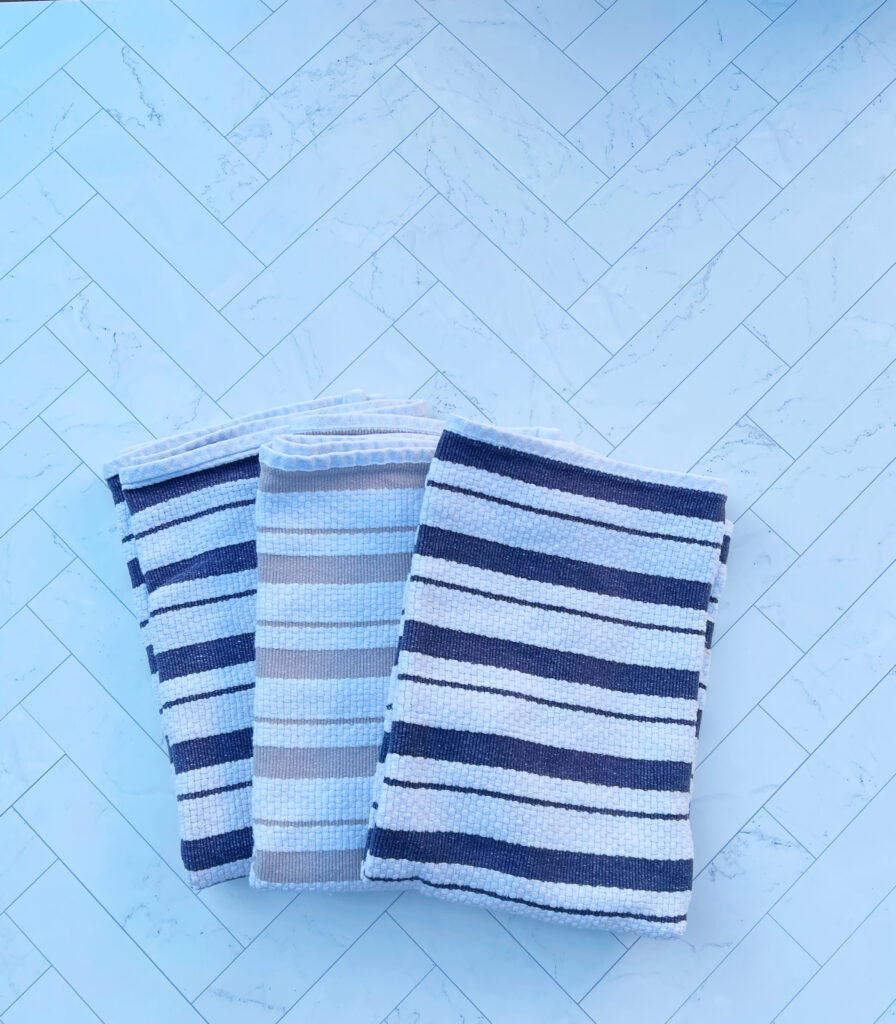
Ditch paper towels and use cloth dishtowels
I realized a couple of years ago that if I wanted to get serious about reducing my reliance on single use plastic, I needed to think about the hundreds of thousands of ways that I engage with plastic on a daily basis.
Do you think about the plastic wrap around your paper towel rolls? Yeah, I didn’t either. Every single role is wrapped in single use plastic. Not to mention, the paper towel rolls are then wrapped together in groups of 6-9-12 and so on. The paper towels themselves also add to our overall waste in the world.
Are you ready to be challenged a little? Try moving your paper towels out of your kitchen and into a pantry or away from areas where it’s easy to grab them. Replace them with reusable cloth towels. Just try it. Give it a week. See what you think.
A couple of years ago, my husband and I moved our paper towels off of our kitchen counter and into our broom closet. I didn’t think we would make it a week without using our paper towels but we committed to giving it a try. Since then, we almost exclusively use dishtowels, Swedish dish towels, or sponges around our kitchen. We like using Williams Sonoma’s dishtowels. They are a kitchen classic and workhorse when I’m working in the kitchen.
Try reusable straws
Did you know that plastic straws can’t be recycled? When I learned that, it blew my mind. I made the switch to metal straws when I found out that plastic straws can’t be recycled. I worried that the feeling of metal might be unpleasant but I quickly got used to the feeling.
The cleanup is sometimes what deters people from committing to reusable straws. When I need to wash a reusable straw, I run a little water through the straw before sending it through a cycle in the dishwasher. If I’ve had a smoothie, I run the straw brush through them to make sure they are extra clean.
Buy clothes in natural fibers
This tip might seem like a stretch, but let me explain. A couple of years ago, I learned that some synthetic microfibers, like polyester, acrylic, and nylon, are different forms of plastic. When we wash those clothes, tiny particles from the fabrics, called micro-plastics, are released into the water. Those tiny pieces of plastic pass through water treatment plant systems and eventually end up in our rivers, streams, and oceans. Once they are in our environment, they cycle through our ecosystem and in turn enter into the bodies of wildlife, our food sources, and eventually, our bodies.
In addition to the micro-plastics that enter our environment through synthetic clothing, I was astounded to learn how many tons of clothing end up in landfills each year. Fast fashion often uses synthetic fibers. Their clothes are often poorly made so they end up discarded into trash bins or donated in hopes that “someone somewhere will want to wear it.” I was equally shocked to learn that a lot of donated clothing ends up in landfills. Charities and thrift stores simply don’t have the space to store the influx of fast fashion clothing that permeates our world. So it gets tossed.
Bottom line: Synthetic fibers make inexpensive clothes but it costs our ecosystem.
Instead of buying the cheapest clothes on the rack, consider clothes that are made with natural fibers like cotton, silk, bamboo, leather, and cashmere. There are lots of affordable brands out there that make great clothes in natural fibers. It takes just a minute to check the label or click on the drop-down menu to learn about a fabric. I realize that it’s not always possible to buy natural fibers. Buying clothes that are made with natural fibers is sometimes a privilege for those who can afford it. I also think that planning to wear the clothes we have and not giving into fast fashion marketing also helps the environment, regardless of what fabric we are purchasing. IT also saves a lot of money to forgo engaging with fleeting trends.
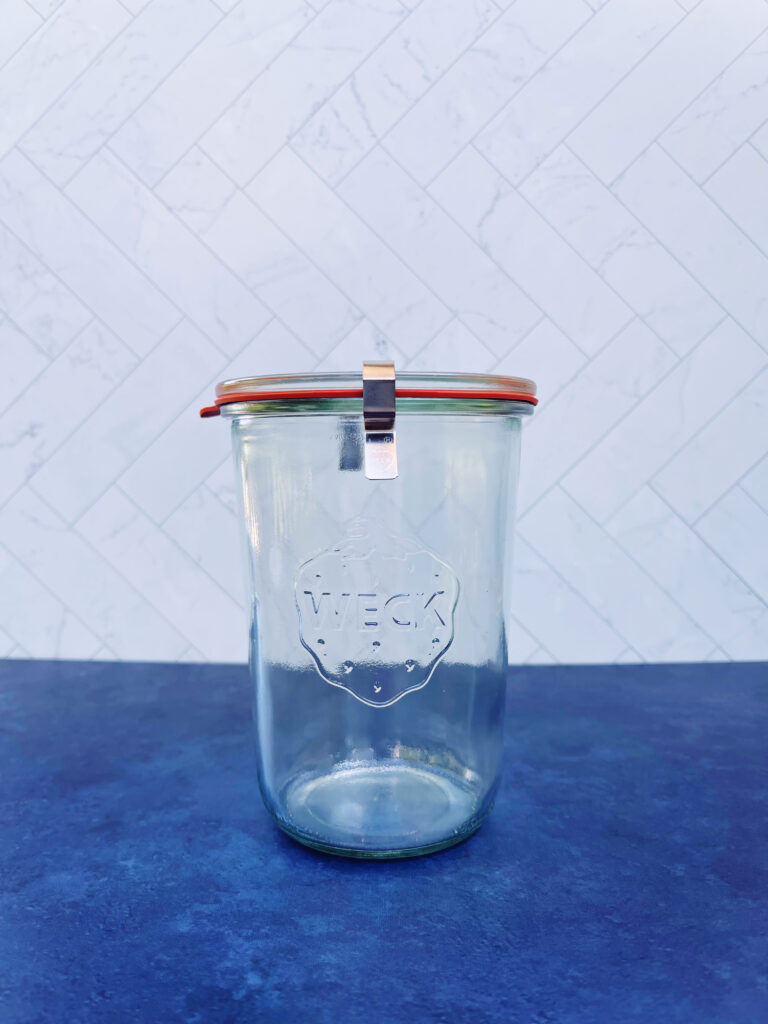
Store food in glass jars
Do you have a product that brings you joy to use?
I’m talking about the simple kind of joy that makes you feel content. I don’t know why, but Weck jars do that for me. I learned somewhere that you can extend the life of your strawberries if you store them in an airtight jar. Bonus if you’re repurposing a jar from your condiments. But, if you need a larger one, Weck jars are a great alternative.They’re air tight and dishwasher, freezer, and microwave safe. I just ordered a few from and they are actually cheaper than Amazon.
Remember your to-go mugs
I know, this isn’t new tip, but it’s one that can have a huge impact in the world. Bringing my own mug can sometimes feel annoying, but I appreciate knowing that I’m reducing my overall waste in the world when I do. I shudder to think of how many single use coffee cups I’ve wasted in my life time. These days I love bringing my Yeti mug to the coffee shop. In Seattle, most coffee shops will give you a small discount for bringing your own mug. Do other coffee shops outside of Washington state do this? I’m genuinely interested.
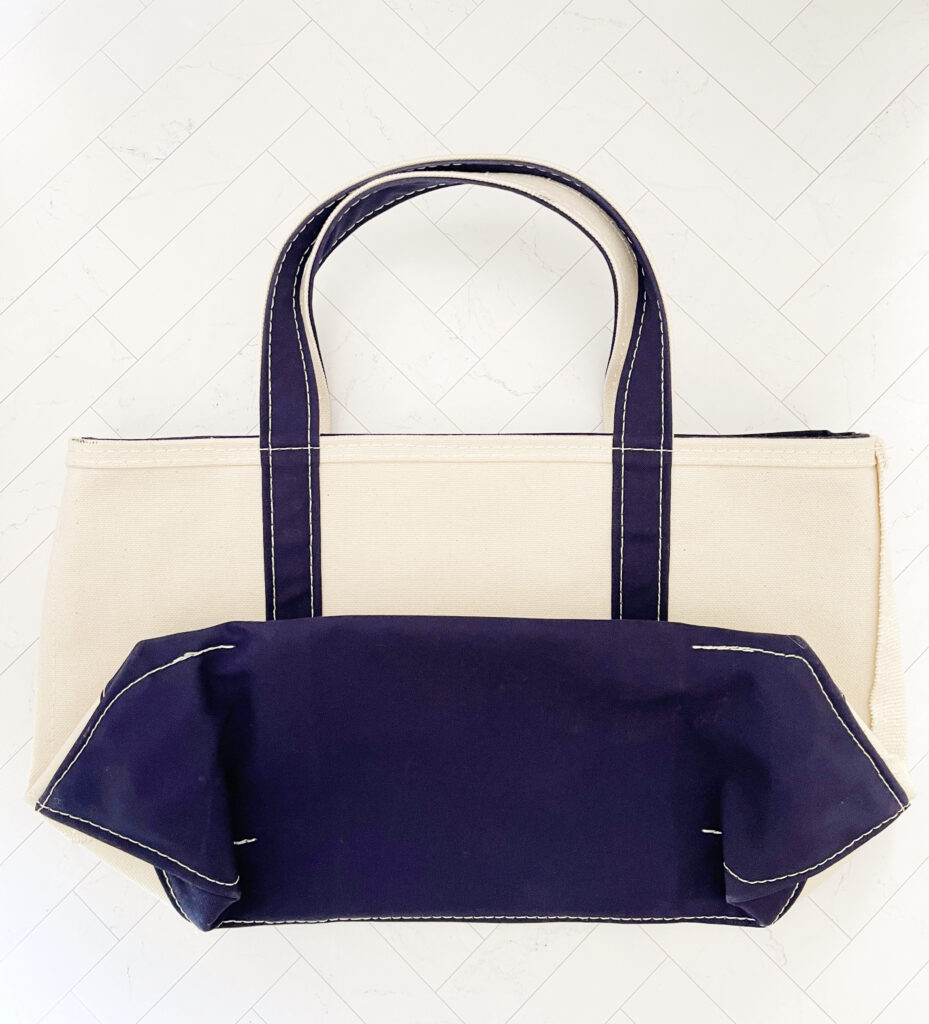
Bring your own bag
Bringing your own bag is a great way to say no to plastic bags and packaging. The LL Bean Boat and Tote is a classic bag and my favorite to carry with me. I have four…with no plans to stop collecting more. I get excited to use this bag – which reminds me to grab it before I go shopping.
Buy condiments in glass jars
Glass is easier to recycle than plastic. Like metal, glass can recycled an unlimited number of times. Plastic can be recycled 2-3 times before it loses its ability to be repurposed. When choosing between glass or plastic, it’s better for the environment to use and recycle glass.
When choosing my condiments, I start with products that are stored in glass jars. Then, I choose my favorite.
Glass jars are also GREAT for storing pantry items once you’re finished with their original use. I’ve stored beans, rice, pasta, or even homemade salad dressing or my monthly supply of simple syrup in repurposed glass jars. And, if I can’t use them, I feel much less guilty throwing them in our recycle bin when we are finished.
What’s your favorite condiment in a glass jar? Mine has to be our ketchup.
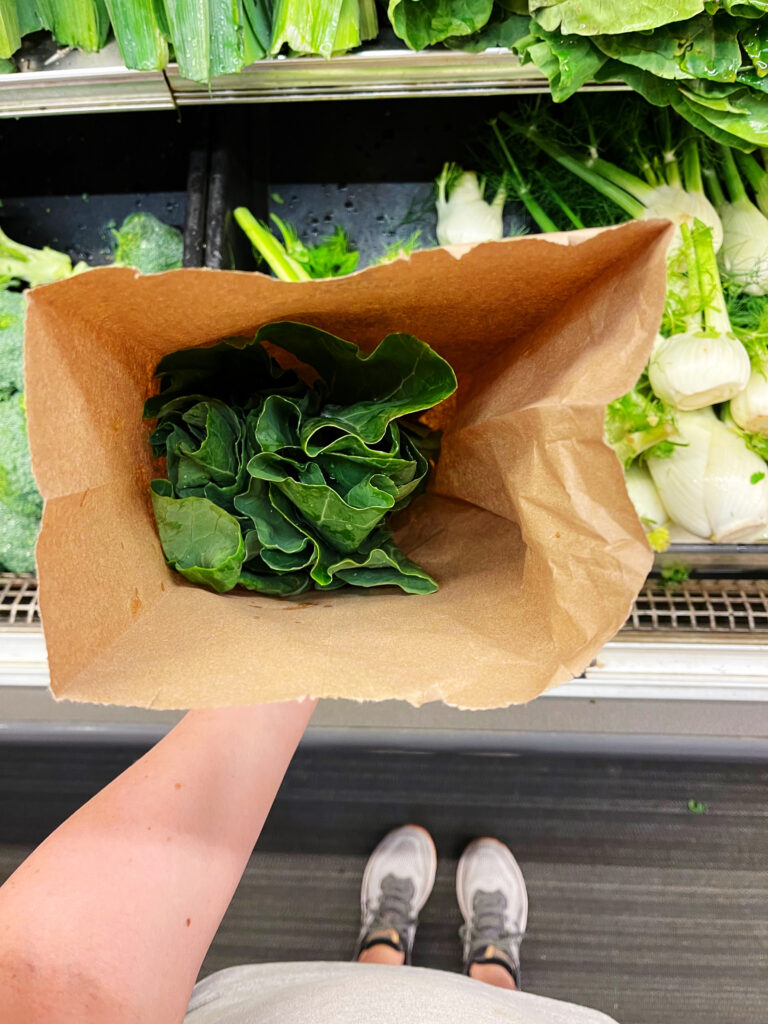
Use brown paper bags with produce
A couple of nights ago, I needed to run to the grocery store to grab some ingredients for a soup that I planned to make the next day. I forgot my reusable produce cloth bags. I panicked for a minute because I despise using the plastic bags found in produce aisles. It’s such a waste to put the produce in the bag…and then throw it away the minute that I get home.Then I remembered a trick that I learned: most produce sections have brown paper bags somewhere in their produce sections. My store has them near the apples and the mushrooms. I grabbed a bag and recycled it when I got home. This is an easy trick that can have a huge impact on our single use plastic habits.
Try facial soap that comes in a bar
One way that I lower my use of plastics is by using cleanser bars for my face. First, most bars of soap come in plastic free packaging. And, when I researched the best facial cleansers, most skin care specialists will tell you that a mild soap is what’s best for your face. It’s everything else (moisturizers, serums, creams) that make the biggest difference on your skin.
I chose CeraVe because it’s gentle and hydrating. I also save a lot of money on bar soap – which I promptly use on one of the skin care products I shared in my Instagram stories.
If you haven’t used bar soap for your face, try it out. The investment isn’t a costly one and if you don’t like it, you can always go back to your favorite standby.
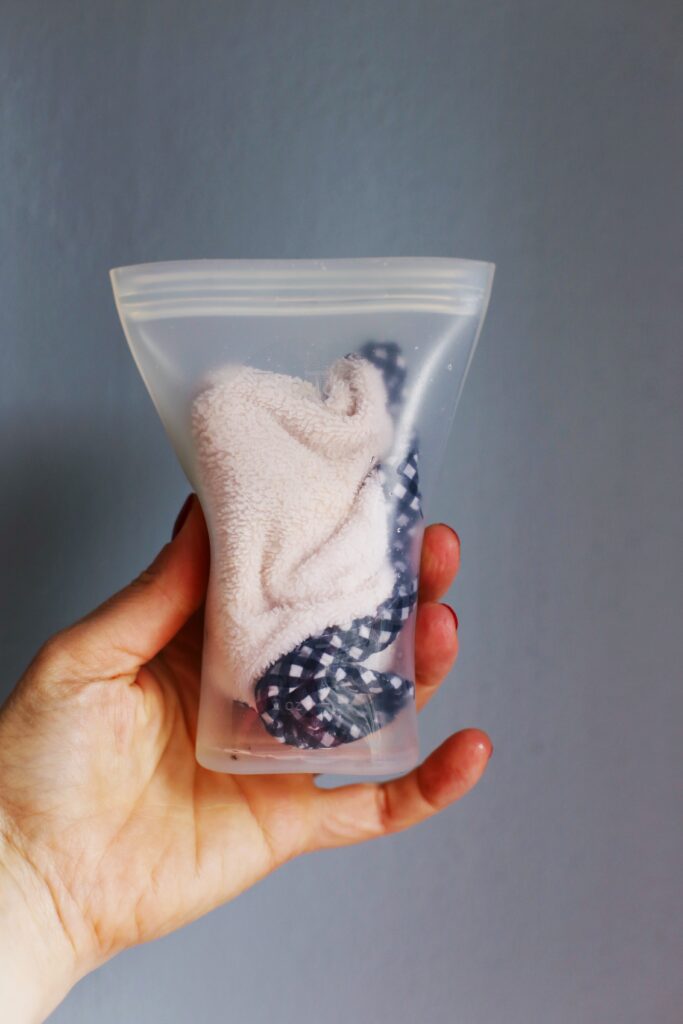
Try Zip Top silicone containers instead of plastic baggies
(Be sure to use my discount code on ziptop.com when ordering your first set – THECABRO15)
Reusable containers aren’t a new phenomenon. But have you thought about the multitude of ways that you can leverage them? Of course you can use them to store food. I originally used these tall, skinny containers to store my breast milk so that I didn’t waste plastic milk bags. Zip Top makes the perfect size containers for storing milk. Now, when I travel with Z, I slip in a damp washcloth to clean his face after meals on the go.
I hope these tips help you rethink your relationship to single use plastic. Leave me a comment with one that I missed!

